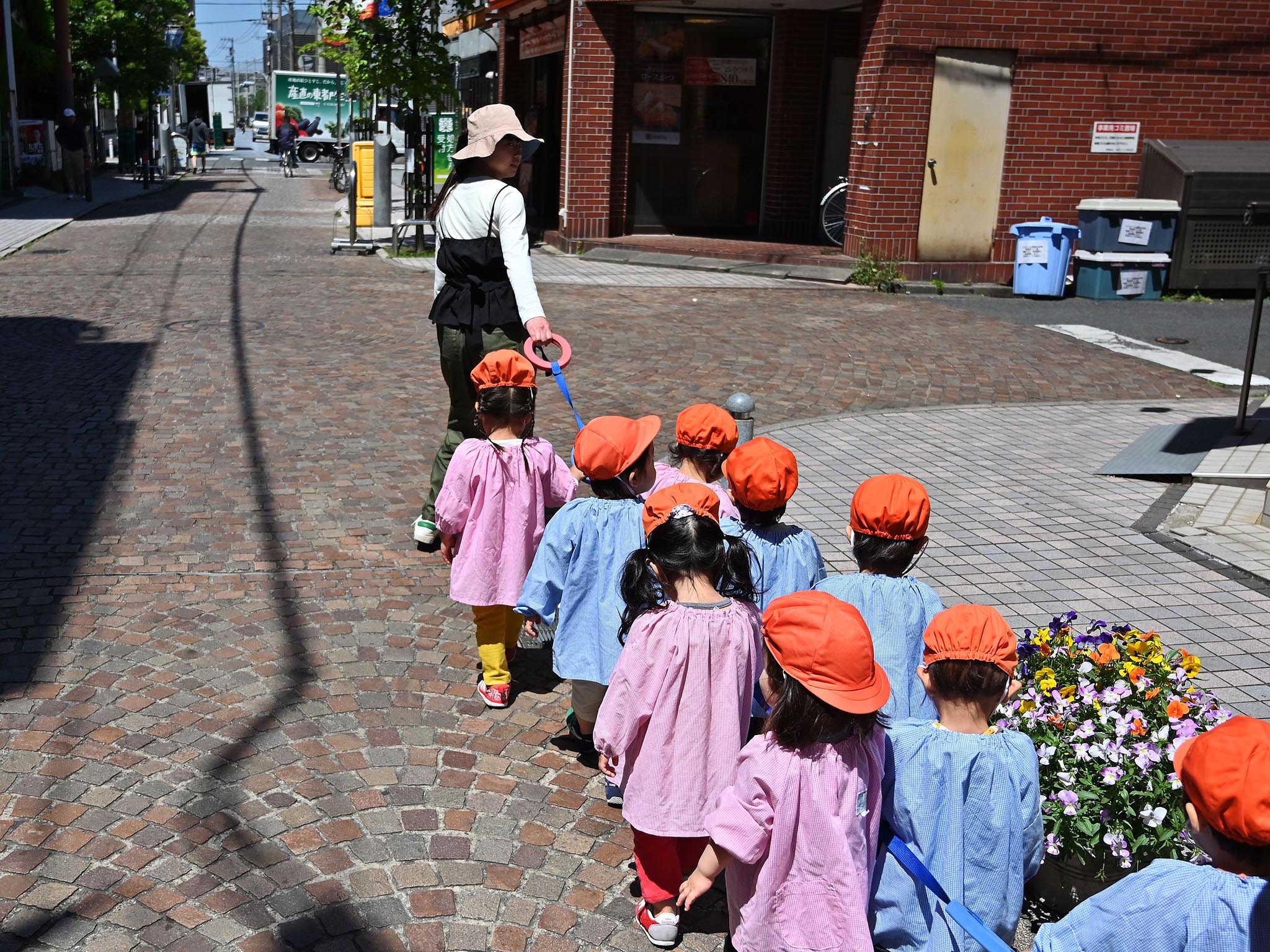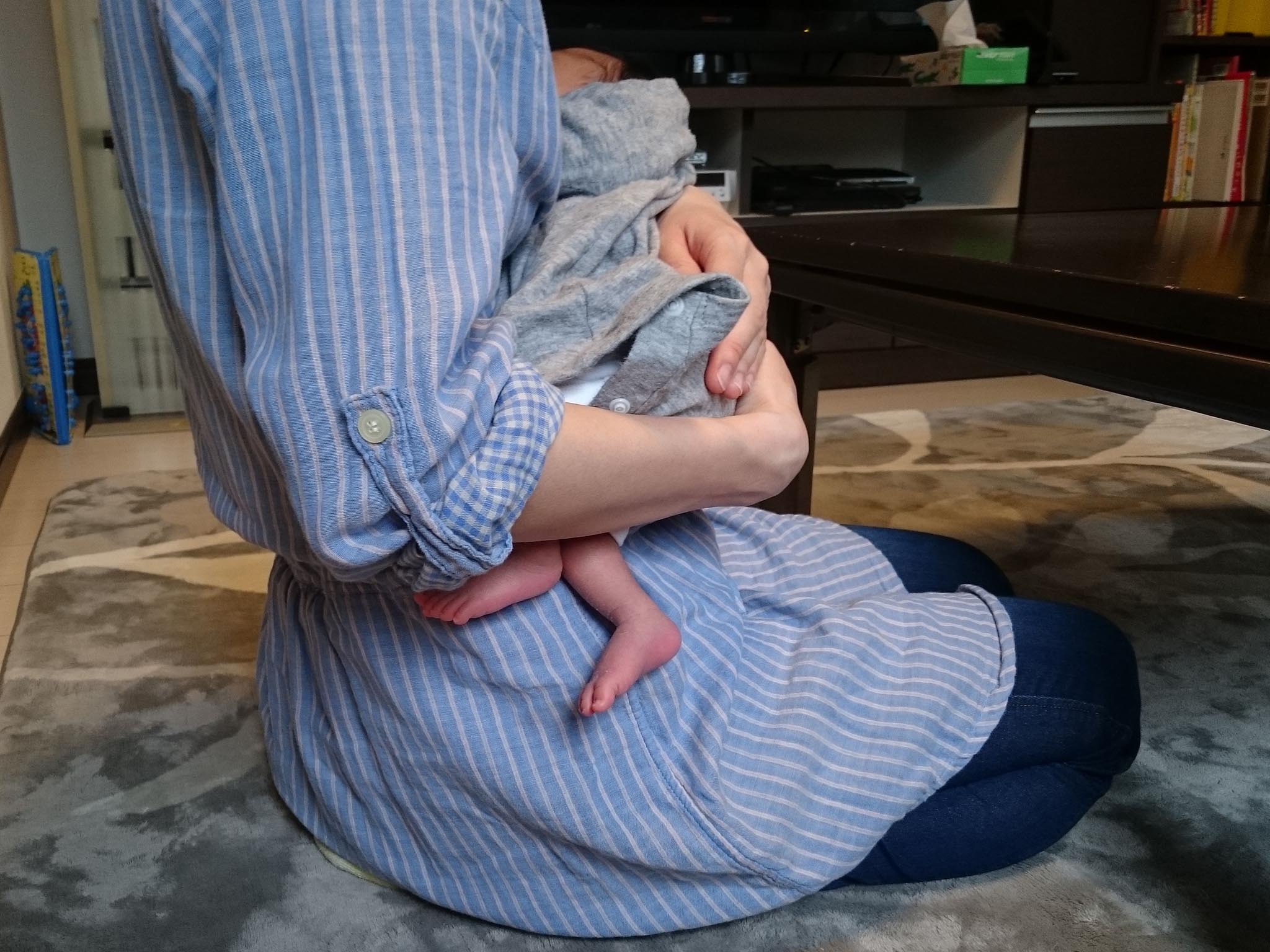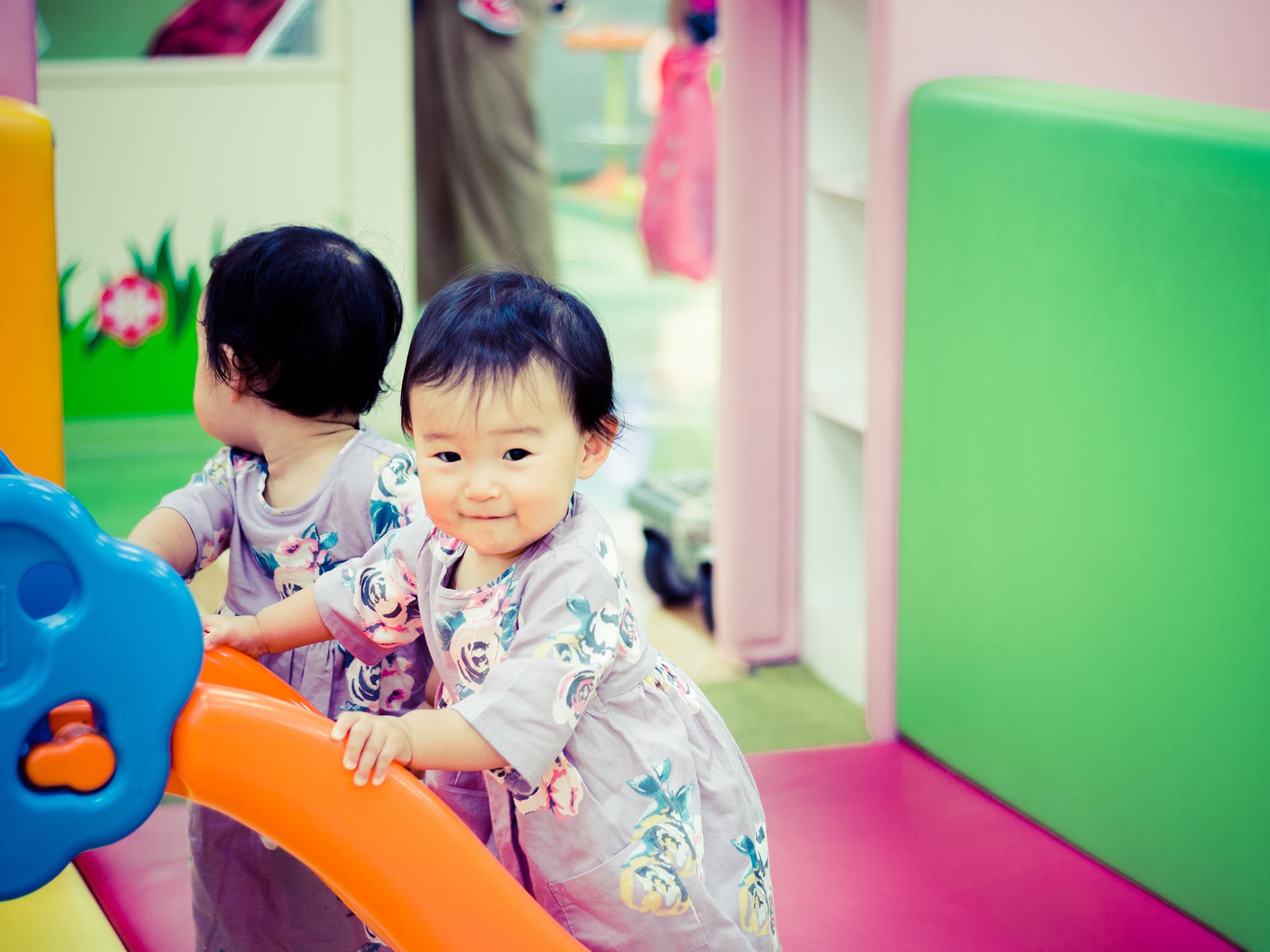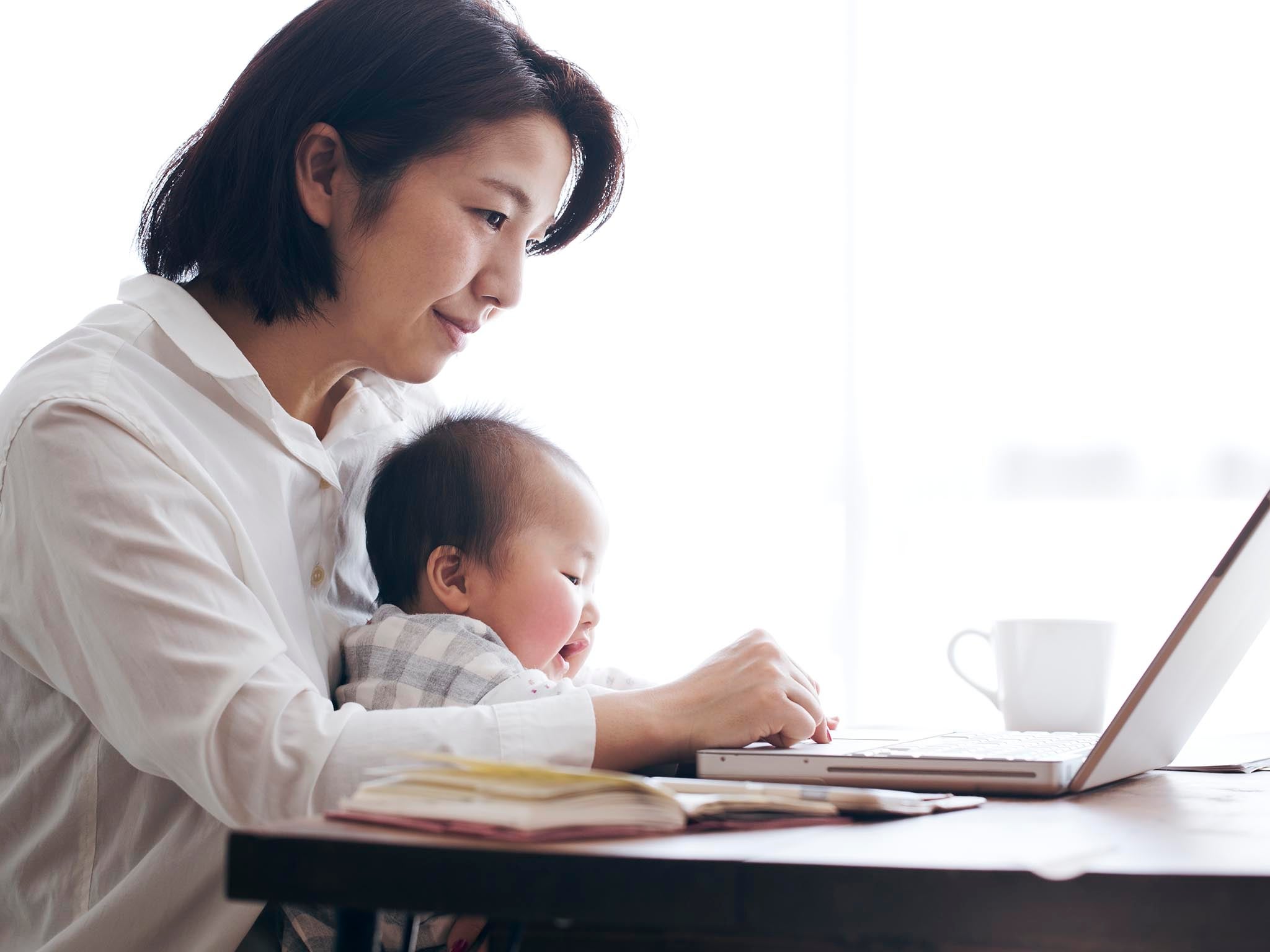Japan desperately needs daycare workers – but is rejecting those with children of their own
Hundreds of thousands of childcare places need to be created for babies and toddlers – but discrimination against mothers-to-be is rife, Motoko Rich writes

Your support helps us to tell the story
From reproductive rights to climate change to Big Tech, The Independent is on the ground when the story is developing. Whether it's investigating the financials of Elon Musk's pro-Trump PAC or producing our latest documentary, 'The A Word', which shines a light on the American women fighting for reproductive rights, we know how important it is to parse out the facts from the messaging.
At such a critical moment in US history, we need reporters on the ground. Your donation allows us to keep sending journalists to speak to both sides of the story.
The Independent is trusted by Americans across the entire political spectrum. And unlike many other quality news outlets, we choose not to lock Americans out of our reporting and analysis with paywalls. We believe quality journalism should be available to everyone, paid for by those who can afford it.
Your support makes all the difference.Ever since she was a young girl, all Erica Takato wanted to do was work with small children. She earned a degree in early childhood education and started her career in a profession of utmost importance for Japan: teaching preschool. Until she got pregnant and was hounded from her job.
A few weeks into her term, she requested time off for bed rest ordered by her doctor. But she says her boss questioned her condition and told her that, typically, women at the preschool resigned once they became mothers. Takato was shocked. But feeling harassed by her boss and bullied by her fellow teachers, she quit.
“I was so discouraged and lost hope of being able to work,” she says. It is the last thing Japan needs.

The government is eager to bring more women into the workforce, anxious to breathe life into the economy and fill jobs that sit empty as the population declines. Women are responding – or trying to, anyway. But even with the nation’s lowest number of births in more than 100 years, Japan is scrambling to come up with enough childcare for mothers to go back to work.
At least 20,000 babies and toddlers are on waiting lists for publicly subsidised daycare in Japan, and the government says it needs to create hundreds of thousands more slots in less than two years – a giant undertaking that depends on finding tens of thousands of new teachers. Union officials and former teachers cite a major obstacle to the aspirations: beyond the long hours and low pay, daycare workers are often pressured or forced out of the profession for having babies of their own, subjecting them to discrimination in the very settings created to help mothers pursue careers.
The harassment is not limited to the daycare industry. According to the Ministry for Health, Labour and Welfare, complaints against employers for demoting or telling women to resign because they got married or pregnant or gave birth have grown more than 20 per cent in the past decade – a statistic that only begins to capture the problem, experts say.
“In Japan, to go against your company on your own is very difficult,” says Kazuya Takemura, a lawyer who helped represent a Japan Airlines flight attendant who sued the airline when it forced her to take unpaid leave after she reported her pregnancy. With its punishing hours and expectations to work well into the night, Japan’s work culture can be especially inhospitable to mothers.
“Once a woman gets pregnant and gives birth, it’s impossible for her to work in the same way as single women or male workers,” says Yumi Hasegawa, a lawyer who has worked on maternity discrimination cases. “That’s why the companies think, ‘We don’t want such workers,’ and that leads to maternity harassment.”

But discrimination in childcare centres has a particular domino effect – because it ends up blocking other mothers from being able to go back to work as well. Most of the licensed daycare or nursery schoolteachers in Japan are women, and many end up leaving the profession. One of the biggest reasons, they say, is that they find it impossible to continue working once they have children, according to a poll by the National Union for Daycare and Welfare Workers.
Many teachers “wonder whether it’s even a good idea to mention their pregnancies”, says Kazuko Sasaki, head of the union’s nursery school chapter in Tokyo. In one case last year, a preschool principal instructed her teachers to schedule their pregnancies so that their maternity leaves would not overlap, then reprimanded one of them for getting pregnant out of turn.
The pressure on preschool teachers to accommodate the demanding work culture or quit altogether has created a vicious cycle in which daycare centres are perennially short of workers – and Japanese mothers desperately hunt for openings for their children. In crowded Tokyo neighbourhoods, many mothers begin the search before their babies are born.
“The four most competitive activities in life,” says Mikiko Eto, principal of Hatto Nursery School in Tokyo, “are the entrance exams for university, getting a job, finding a spouse – and securing a nursery school spot.” Japan’s daycare crunch may seem counterintuitive in a country with relatively few young children. Though it has nearly 130 million people, fewer than 1 million babies were born last year, the lowest since records began in 1899. Japan’s birthrate is one of the lowest in the world.
For generations, Japanese women were expected to quit their jobs after marrying or having children. Now, a solid majority keep working. According to the Hamilton Project at the Brookings Institution, 72 per cent of married women aged 25 to 54 worked in Japan in 2017, up from 58 per cent in 2000. Prime minister Shinzo Abe, who took office in 2012, promised to help mothers go back to work by drastically cutting daycare waits. Since 2013, municipalities have raced to add 535,500 publicly subsidised daycare slots, and Abe’s government recently made most preschools free for three- to five-year-olds – that is, if families can find an opening.
But the government wants to increase the proportion of working women to 80 per cent. To make that possible, it says it must create 320,000 additional publicly subsidised daycare slots by early 2021, requiring 77,000 more teachers. Parents shut out of publicly funded daycare can sometimes find openings in unsubsidised, private facilities. But many families are wary because the facilities cost much more and are not required to meet federal standards for the number of licensed teachers in classrooms.
In the rush to add slots, some local governments have lowered other standards as well, raising more concerns. Several children have died in private daycare facilities, including a case in which an infant suffocated to death during a nap last autumn. Then there are the entrenched cultural views of motherhood in Japan, which have lagged behind workplace realities.
“It is a really heavy-rooted mindset that mothers will take care of their children until they are three,” says Hiroko Inokuma, a journalist and childcare development specialist. In a speech last year, a lawmaker in Abe’s governing Liberal Democratic Party said: “Children need an environment in which they can stay with their mothers.”

Similarly, after a blog post went viral three years ago with an anonymous mother’s plea – “I couldn’t get daycare – die Japan!!!” – the mayor of a Tokyo district publicly scoffed that “it’s the parents’ responsibility” to take care of their children. The problem is magnified by the fact that Japanese parents are generally reluctant to invite strangers into their homes to care for their children, making it harder to fill the gap with nannies or babysitters.
And where previous generations of grandparents lived with – and helped care for – their grandchildren, multigenerational households are far less common today, particularly in large cities such as Tokyo. That leaves many parents frantic to get into the government-funded daycare centres – a sometimes quixotic pursuit that Asami Marumo, a trained nurse, says pushed her out of her job.
Nursing is another chronically understaffed profession, and Marumo, 42, wanted to put her nearly two decades of experience to work. But she says she applied to six public daycare centres for her daughter in a Tokyo suburb. None had openings. “My work would improve my child rearing, and my child rearing would help me with my job,” Marumo says as her daughter, Sumire, squirms in her lap and tries to shove cookies into her mouth. “I think it’s like two wheels, and both are indispensable.”
After years of trying, she finally found an opening in a preschool for her daughter, now four. In the most coveted, publicly subsidised daycare, teachers generally hold a minimum of two-year college or technical school degrees. Yet they are among the lowest-paid college-educated workers in Japan.
Teachers think, ‘Since that teacher just had a baby, maybe I should wait another year before getting pregnant’
To accommodate the long working hours of parents, many daycare centres stay open for 11 hours a day or longer. Teachers are also expected to track the most meticulous details. In Tokyo, they fill out daily journals for each child younger than two, recording meals, diaper changes, play activities and developmental milestones. For children five and younger, teachers produce regular service plans.
The reports can be minute chronicles, often completed by teachers after their shifts end. In one dispatch about a three-year-old at Midorigaoka Nursery School in Tokyo, the teacher wrote: “He is really obsessed with peeling buds off the flowers when we go to the park. If he cannot peel the buds, he will present them to the teacher for a little help.”
For teachers, the working conditions are often at odds with having children of their own. But daycare administrators say that when a teacher goes on maternity leave, it burdens the rest of the staff, especially because the tight labour market makes it difficult to hire substitutes. “Some schools actually conduct surveys or questionnaires at the beginning of the school year or directly ask, ‘Are you planning a family this year?’” says Sasaki, the union official.
Ken Kiriyama, the principal of Midorigaoka, says teachers may come to a tacit understanding themselves. “They think, ‘Since that teacher just had a baby, maybe I should wait another year before getting pregnant,’” he explains. A few alternative daycare centres have sprung up. At babyCo, a small studio in Tokyo that combines office space with babysitting services, women can work with their children nearby.
On a recent afternoon, two mothers hunched over their laptops at a table while caregivers tended their babies in the other half of the room strewn with toys, bouncy chairs and car seats. The babyCo teachers brought their own children, too.
Takato, the daycare teacher who quit her job after getting pregnant, says she wished she had that choice. As a young college graduate with an early childhood teaching qualification, she easily found a job at a traditional child care centre. Then, after she got pregnant, her doctor warned that she was at risk of miscarriage. Her principal’s response stunned her.
I thought, ‘What’s the point of risking my own child’s life to put up with these teachers?’
“She said, ‘You are entitled to maternity leave, but at this school nobody has ever used that system,’” Takato recalls. “She said, ‘I let pregnant teachers quit before they take a leave.’” Takato says she felt the not-so-subtle pressure from other teachers, who did not relieve her from tasks such as climbing ladders to change light bulbs or carrying a stone mill used for pounding rice.
When she felt nauseated, she says, the vice principal told her that morning sickness wasn’t real. When her doctor ordered her to take two weeks of bed rest because she was at risk of miscarriage, Takato says her principal insisted she come in to deliver the doctor’s note. “I thought, ‘What’s the point of risking my own child’s life to put up with these teachers?” she says. When her doctor told her to extend her bed rest, she quit.
Now she keeps up a slate of freelance jobs online and edits a blog that offers tips on daycare. Without a child, Takato says, she might consider teaching again. But she didn’t see how it could work now, especially with her husband working such long hours. He is rarely home when their daughter is awake. “Even though we have qualifications as teachers, and we heard in school that your job will be secure, it’s almost like a myth,” she says. “In reality, as a mother, it’s really impossible.”
© New York Times
Join our commenting forum
Join thought-provoking conversations, follow other Independent readers and see their replies
Comments